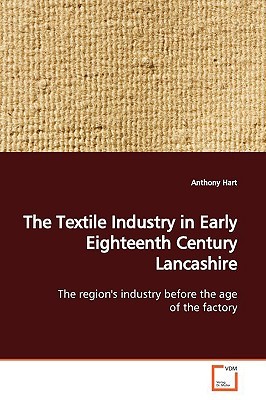
- We will send in 10–14 business days.
- Author: Anthony Hart
- Publisher: VDM Verlag
- ISBN-10: 3639157141
- ISBN-13: 9783639157147
- Format: 15.2 x 22.9 x 0.9 cm, minkšti viršeliai
- Language: English
- SAVE -10% with code: EXTRA
The Textile Industry in Early Eighteenth Century Lancashire (e-book) (used book) | bookbook.eu
Reviews
Description
The early 1700s were vital to the growth of the textile trade in Lancashire, which became the world's leading industrial region by 1800. However, apart from a few local case studies, historians have often overlooked sources revealing the nature of Lancashire's industry at this time. While these years were crucial to the subsequent development of textile production, much work to date has focused on a theoretical approach lacking in empirical data. This book offers a fresh interpretation of industrial activity in Lancashire two to three generations before the arrival of the factory system of textile production. It is based on a county-wide study of Church of England parish registers for the 1720s. The emergence of a labour supply for the industry is explored, and organisation of the trade is evaluated using wills and inventories left by hitherto unknown entrepreneurs. This analysis sheds new light on this important phase of industrial development. The empirical data revealed in this study should prove invaluable to researchers and students of Lancashire's textile industry, as well as those interested in this key era of regional history.
EXTRA 10 % discount with code: EXTRA
The promotion ends in 24d.00:30:17
The discount code is valid when purchasing from 10 €. Discounts do not stack.
- Author: Anthony Hart
- Publisher: VDM Verlag
- ISBN-10: 3639157141
- ISBN-13: 9783639157147
- Format: 15.2 x 22.9 x 0.9 cm, minkšti viršeliai
- Language: English English
The early 1700s were vital to the growth of the textile trade in Lancashire, which became the world's leading industrial region by 1800. However, apart from a few local case studies, historians have often overlooked sources revealing the nature of Lancashire's industry at this time. While these years were crucial to the subsequent development of textile production, much work to date has focused on a theoretical approach lacking in empirical data. This book offers a fresh interpretation of industrial activity in Lancashire two to three generations before the arrival of the factory system of textile production. It is based on a county-wide study of Church of England parish registers for the 1720s. The emergence of a labour supply for the industry is explored, and organisation of the trade is evaluated using wills and inventories left by hitherto unknown entrepreneurs. This analysis sheds new light on this important phase of industrial development. The empirical data revealed in this study should prove invaluable to researchers and students of Lancashire's textile industry, as well as those interested in this key era of regional history.


Reviews